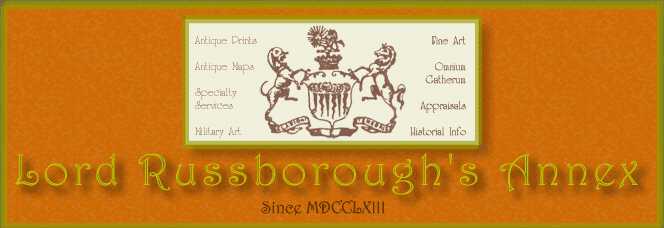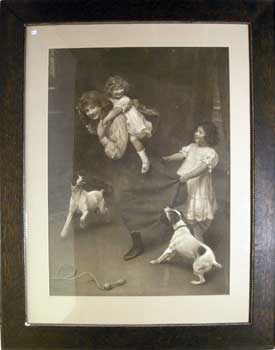Terry Parker's book Golden Hours identifies one of the subjects of the work (the girl at far right) as a local called Ivy, who had three siblings also named for flowers: Rose, Lily, and (Sweet) William. The dog at right was named Spot, and was owned by the artist's wife's cousin, Lily Coccioletti. The oldest girl was named Queenie and she carries the artist's beloved daughter Marjorie. This use of local friends and family members for his models was typical of the artist, and lends the works their considerable personal charm. The whole scene epitomizes healthy activity and fun. The beautiful dresses and the well-appointed room inform the viewer that these children are of a privileged background and have few worldly cares.
Though he started his career as an animal painter, Elsley soon expanded his repertoire to include tender portraits that combined children with animals. Indeed, his portrayal of animals as sentient beings who relate to children elevated them to a place of pride in the family, as opposed to their more accepted role as working or hunting animals. Elsley was very enthusiastic about these subjects, for which he quickly became famous. He was quoted in the December 1904 London Magazine saying: "Why shouldn't I join together children and dogs?" The interviewer further noted Elsley's passionate approach to his subjects: "[Elsley] has an intense love for children. He has often been heard to say it would be impossible to paint children if the artist did not love them" (Parker, p. 14).
Elsley's paintings and prints were appreciated by a public hungry for images of happiness and domesticity in a time of great change for England as it entered the Industrial age and prepared for the onslaught of war.



